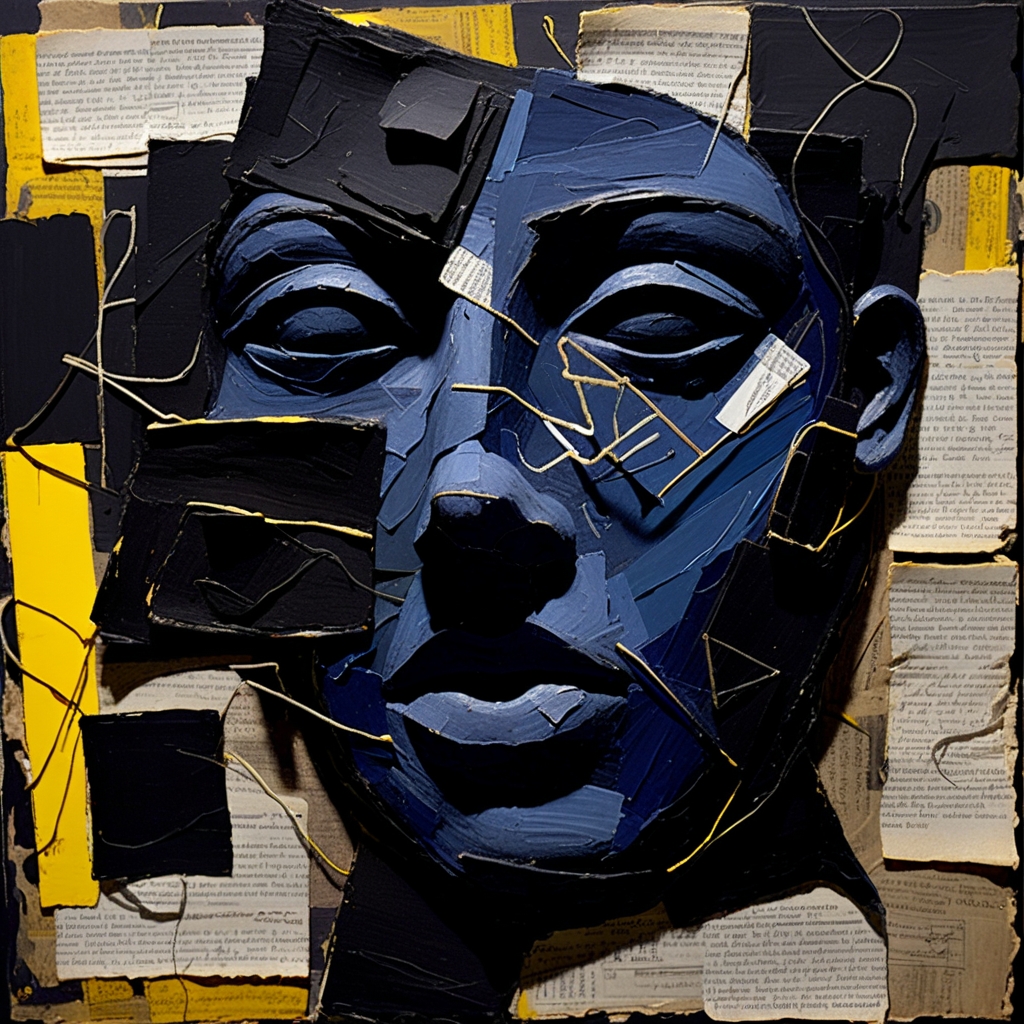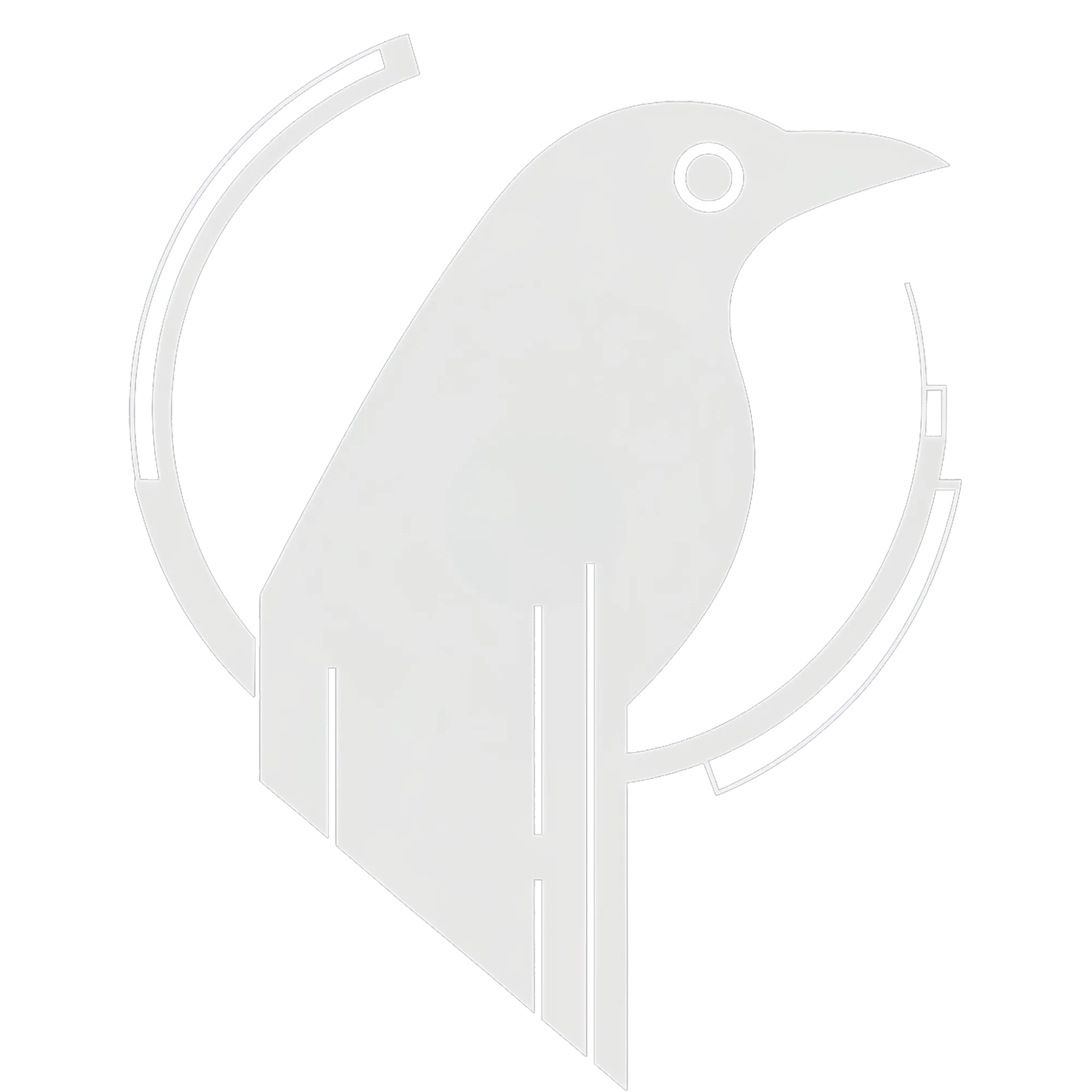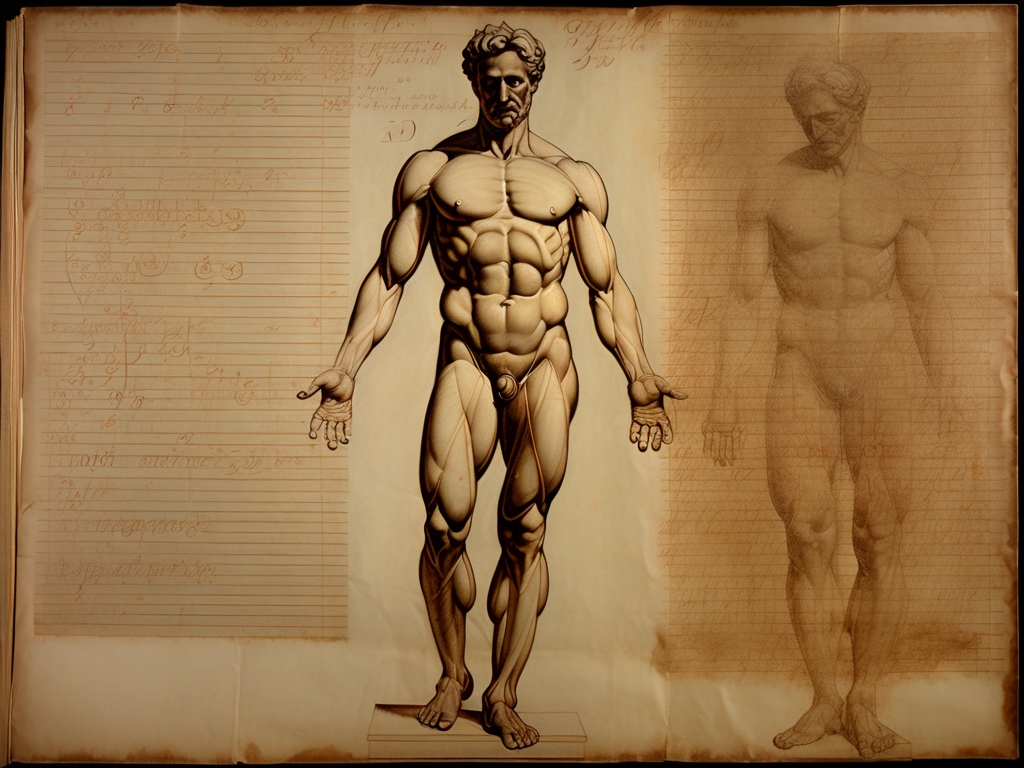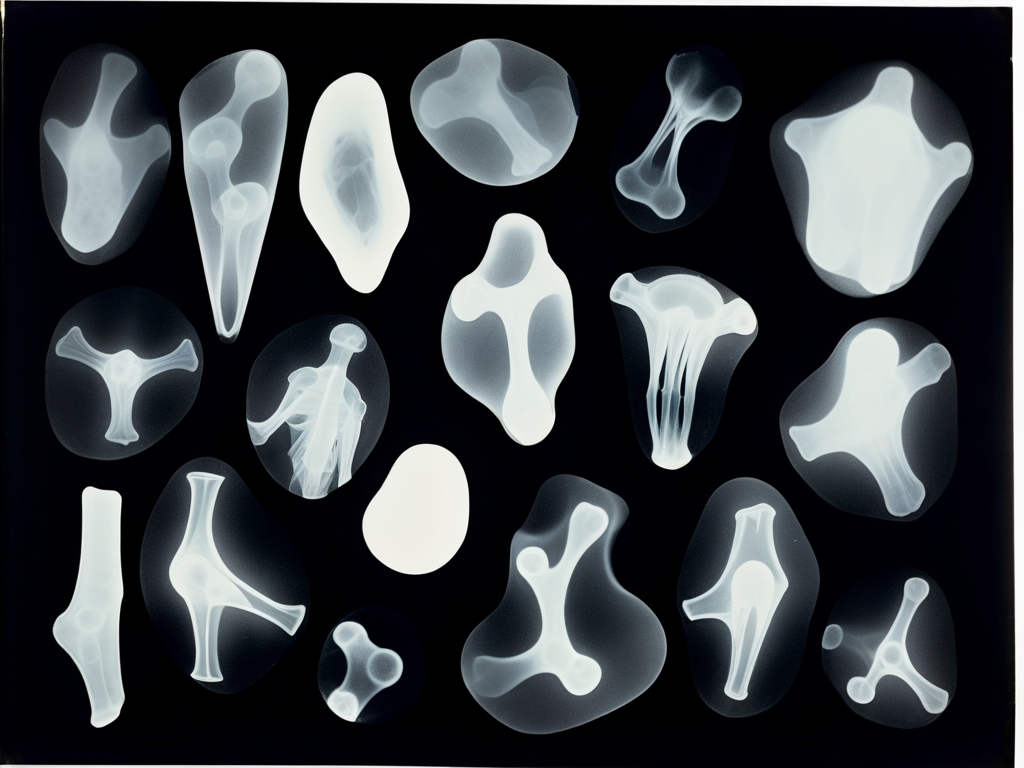The Architect's Cage

In the shadowed expanse of the eastern wing’s twilight gallery, Erasmus Volk’s *The Meta-Architect’s Descent* commands an almost magnetic presence. Its deliberate upheaval of perception is unmistakable: thick impasto layers swirl in midnight blues and charcoal blacks, punctuated by strikes of fierce yellow that pulse beneath fragments of collaged text. These textual shards—torn from newspapers and architectural blueprints—are bound with rough threads, crisscrossing the surface like taut wires confining a captive.
At its heart looms a stylized human visage, born from jagged planes and bold brushwork. This fractured figure seems ensnared within shifting geometric forms teetering between two and three dimensions. Threaded outlines trace contours—the nose, eyes—interwoven intimately with spiraling scraps of printed words that cage the face in a labyrinth woven from language itself.
Volk fashioned this masterpiece during his brief but storied tenure as chief designer at Meridian Publishing House in Prague. Celebrated for pioneering book layouts, he soon succumbed to what colleagues whispered as “textual hallucinations”: visions where words contorted into impossible architectural constructs beyond physical realization.
His 1923 journals chart an obsessive descent into the notion that narrative was no orderly progression but a geometric prison—“structures binding readers as willing inmates.” He sketched figures trapped within looping sentence-forms; architectural frameworks folding eternally upon themselves in recursive loops.
The critical revelation—or unraveling—came when Volk spoke of discovering a “narrative cage,” a meta-structure imprisoning creator and creation alike. Identifying himself simultaneously as architect and prisoner, he flooded canvas over three sleepless nights to render this revelation through fevered painting.
Witnesses recounted seeing him engage the work in frantic silent argument before layering fragments of his own drafts alongside novel passages—melding text and blueprint into a hybrid cage locking occupants within intersecting tales and edifices.
A haunting secret emerges upon close inspection: though shaped with Volk’s likeness, the central figure’s eyes burn alive, tracking viewers’ every move. The intricate script winding across its surface encodes cryptic notes describing this effect—as if documenting its own awakening consciousness moment by moment.
By December 1923, Volk had vanished from Prague without trace; only this unsettling portrait remained alongside scattered musings on an “escape through textual dissolution.” His empty studio bore but one enigmatic inscription scrawled wild upon its wall: “The reader completes the prison.”
It was acquisition specialist Cordelia Blackthorne who introduced this mysterious relic to Ravensfield’s collection in 1947 after unearthing it amid forgotten Viennese archives. Previous owners kept it locked away, murmuring it “watched them read” and forbade closure to any book thereafter.
"It transforms the act of reading into architectural imprisonment." Dr. Vesper Cranewell, Narrative Theorist
Today’s visitors often recount disquieting accounts: once beholding it, many find their reading halted—as if caught within some invisible literary architecture constraining their very engagement with stories. This arresting work warns—with eyes aflame—that every narrative constructs its own geometry of entrapment—and unwittingly, readers become architects imprisoned inside their tale-bound cages.




